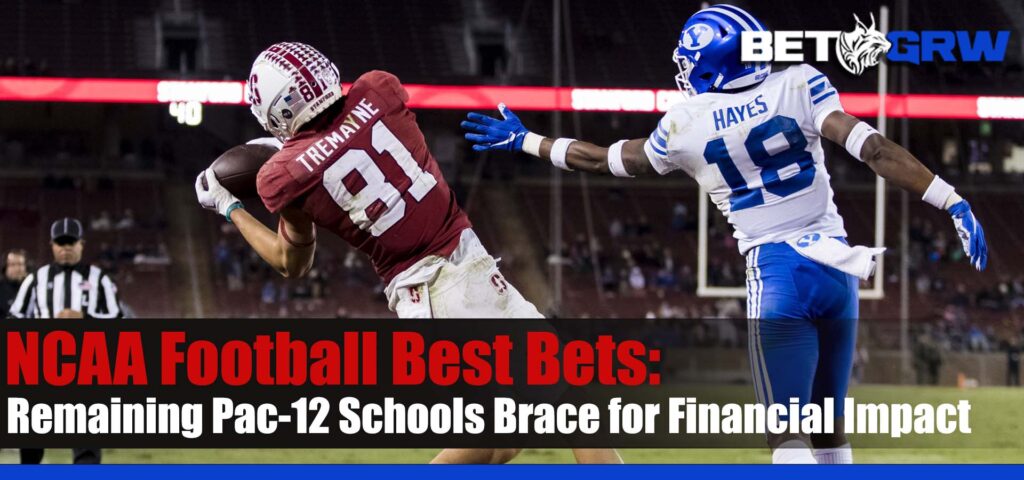
Remaining Pac-12 Schools Brace for Financial Impact – An age marked by rapid changes to college sports has resulted in conference realignment causing great concern within the Pac-12 conference. Where previous realignments cycles involved multiple players with various motives playing a part, current realignments involve limited choices with financial losses likely ahead for California, Stanford, Oregon State and Washington State schools; decisions must be informed while free football ball picks could potentially help mitigate challenges they might face.
Priorities Shift in Uncharted Territory
In this remarkable juncture of realignment, an unusual dynamic is at play. Surprisingly, the primary concern for these remaining schools is not centered around financial gains, as has traditionally been the case. Instead, it’s about securing a stable conference home for 2024 and beyond. The disintegration of the Pac-12 has left the Pac-4 with few options, making the focus on financial returns secondary to the urgency of finding a new affiliation.
Remaining Pac-12 Schools Brace for Financial Impact: Calculating Costs and Value
The financial equation has taken a challenging turn for schools like Oregon State and Washington State. The substantial $21 million earnings they currently enjoy from the Pac-12 contract’s final year seem unlikely to be matched, regardless of where they land. The Mountain West and the American Athletic Conference (AAC) have emerged as contenders for the Pac-4. The MWC offers around $4 million per year per school through its CBS and Fox deal, while the AAC promises approximately $7 million per school over a decade through its partnership with ESPN.
Both options, however, require further negotiation with affiliates to adjust subscription fees, potentially placing additional financial strain on these schools.
A Shift Towards Branding
In a landscape where realignment has reached a turning point, the value of branding is coming to the forefront. The most cherished rivalries in college sports are now concentrated within the Big Ten and SEC, showcasing how branding can supersede financial considerations. This shift highlights that the market’s reality doesn’t necessarily align with how schools perceive themselves.
Survival Over Prosperity
As Pac-4’s options narrow, the focus shifts towards survival rather than financial gain. Even if Oregon State and Washington State secure spots in the Mountain West with their projected $5 million payout, the increased costs for CBS and Fox could strain their budgets. With Washington State already facing an $11.5 million annual athletic shortfall and Cal requiring significant institutional support for athletics, the financial challenges of staying afloat in the FBS loom large.
The Search for Stability in the ACC
For schools like Stanford and Cal, the prospect of joining the ACC emerges as a beacon of stability. The ACC provides an avenue for maintaining relevance in football and basketball while capitalizing on their academic prestige. However, the path is not without obstacles. While the Bay Area schools received notable support, they narrowly missed the required votes for inclusion, signaling the complexities of such a move.
A Critical Crossroads for Stanford
Stanford faces a pivotal decision about its athletic direction. As an institution renowned for its academic excellence, the balance between broad-based athletics and championship-winning aspirations becomes a central question. Leveraging their academic reputation to seek a conference shift raises questions about the weight given to sporting accomplishments within the larger university context.
Independence vs. Affiliation
The looming decision for Stanford raises the question of pursuing independence, much like Notre Dame, or opting for an affiliation that aligns with its athletic goals. The struggles of BYU’s independence illustrate the challenges of maintaining a national presence without the support of a major conference. This decision could shape Stanford’s sporting identity and global recognition.
A Path Forward
While the outcome remains uncertain, it is clear that the remaining Pac-4 schools are navigating uncharted waters. The intricacies of conference rights, contractual obligations, and financial considerations are intertwined in a complex puzzle. The fate of the Pac-12’s name, autonomy, and share of NCAA revenue remain undecided, adding to the layers of uncertainty.
Unravelling the Future
As the college sports landscape shifts, the challenges the remaining Pac-4 schools face underscore the complex interplay between tradition, branding, finances, live betting in Canada, and institutional identity. While the financial hits are inevitable, the decisions made by these schools will reverberate beyond the realm of athletics, shaping their place within the broader academic and sporting communities. The story of Pac-12’s transformation serves as a reminder that even in a world driven by revenue, universities’ core values and aspirations remain central to their decisions.














